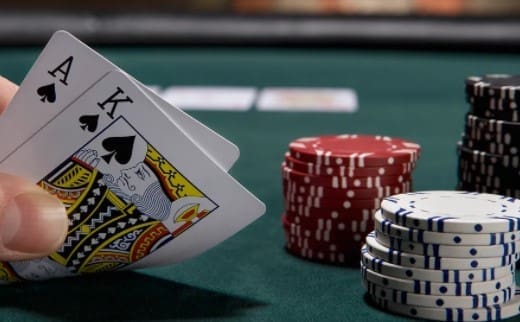Understanding the human condition is one of the best ways to predict the future. The foundation of our future planning is often our needs, dreams, problems, and hopes. For example, the complicated gambling industry is dependent on the nature of the human person. Both the casino and gambler want to win. The increasing strain will determine the game’s future.
Blackjack before 1962:
The Basic Strategy was not something that any player knew existed before the 1962 publication of “Beat the Dealer”, by Edward O. Thorp. Each player had their superstitions about how each hand should play. You also gain some experience playing in the kitchen. Except for a few professional card players, who intuitively assumed that their overbalance might be higher if more packs were left, virtually none of them won Blackjack. These conditions were quite acceptable for casinos. Although Blackjack was not popular until 1962, the percentage of profit was high.
Next decade: 1962 to 1972
The situation was drastically changed after Thorp’s book was published. The book reached its peak in sales and became an international bestseller. Casinos were afraid that everyone would be able to learn the system of Thorp, which would allow them to win huge sums of money.
These panics are well-known. Most casinos changed the blackjack rules, creating an even greater overbalance than the previous set. The introductions took effect for a few weeks, but most casino clients refused to play a game that had such poor rules. In order to comply with the law of supply-demand, casinos had to restore old rules to all players immediately. Gamblers immediately began to play again, but in much larger amounts.
Casinos took advantage of the popularity of Thorp’s book. After reading one book, people who believed they could beat a dealer at Blackjack began to flock to casinos.
However, it was clear that casino gamblers lost the same amount of money playing Blackjack as ever before. The number of gamblers has increased only 100 times. Most people who read the book didn’t understand how the calculation of tens worked. Those who did get to the bottom weren’t able to grasp the entire system from A to Z. The astonishingly higher profits of casinos were a surprise to them.
The 1966 Reedition of the book gave readers a simpler calculation method. A number of books about Blackjack were published over that time. The game gained popularity. More and more casinos were opening tables. Blackjack had outrun the leader craps to become the most popular casino game.
Blackjack of the 70s
Lawrence Revere’s classic book, “Playing Blackjack as a Business”, is responsible for the game’s continued popularity during the 1970s. Revere published a shorter version of his systems in 1969. However, thousands of copies had already been sold by 1972. Revere published an expanded version of his book that included simple, effective strategies for Blackjack. This increased its popularity.
The book “Winning Blackjack”, by Stanley Roberts was also in the right place at the right time. In addition, the author appeared on a variety of TV and radio shows. Roberts spent a lot of money on advertising his book, which made a big splash.
Paranoia was once more a problem in casinos. They began to suspect that systems created with research methods could significantly influence their profits. To fight the system, casinos started to offer multi-pack blackjacks instead of one-pack blackjacks.
Many scientists, mathematicians, and university professors began to write books on Blackjack at the beginning of the 1970s. Some of them created their own card calculation systems. Hi-Opt I is one of the most well-known and efficient systems. It was created in 1974 by Julian Brown, an anonymous postgraduate from a large Canadian university, and used computer programs.
Many professional gamblers switched from the Revere system and to the Hi-Opt I because of its simplicity and effectiveness. In addition, many ordinary gamblers began to use the system in conjunction with the basic strategy. The use of these two systems had the greatest impact on casinos’ profits. Amateurs less often used Roberts’ systems.
Kenneth Uston, Great Horror and Teams:
Kenneth Uston noted that at the end of 1976, he was struck by how efficient the simplest Hi-Opt I types could be. Uston’s book, “Big Player”, describes how Uston and his friends won more than a million dollars playing Blackjack. His teams eventually moved from complex systems to the most basic Hi-Opt I type. As a result, Uston was expelled from several Las Vegas casinos and filed a lawsuit against them for 80 million dollars.
Uston was the beginning of a new era in Blackjack. The possibility that blackjack teams could win large amounts of money was once more a concern for casinos. Nearly instantly, some casinos removed the one- and 2-pack Blackjack and switched to 4-, 6-, and 8-pack versions. Blackjack became too complicated for the average gambler. Casinos began to remove most cards from play, sometimes up to two packs. Roberts mentioned this in an article. Card cards could be withdrawn and added to the game was a new form of crooked gambling.
Casinos can now alter the amount of packs and the degree of cutting and compare profits to balance the rules. Unfortunately, rules are difficult to follow in America, particularly for beginners.
The nightmare continues
It is funny to see that gamblers don’t have rigid thoughts. Keith Taft, who had a pocket computer that he used to play Blackjack, was following Uston’s teams. He played better than any professors anywhere in the world. The Nevada State court broke the USA record for the speed of adopting a statute on computer use in casinos. In the current case, confiscation could last up to five years. However, Taft and his supporters were certain of the constitutionality of that law.
Did you ban the computer? Tommy Hyland, with his most complex systems of tracking, appeared. Casinos now have a new problem… Increase the number of packs and make the riffle process more difficult. To invent shuffle-machines!
Stanford Wong was the first person to defeat these shuffle-machines. It was important to understand how they worked. The poor casinos did not know what to do. These machines are quite expensive.
Maybe new varieties could help? Spanish 21 Super-fan 21, 6/5 blackjack, “Open” blackjack, Blackjack-switch and Pontoon… Each introduction had one problem. Either no one was playing it or the profs knew how to beat it. Tournaments? Old Wong created tournament-focused teams. Each rule was carefully considered and calculated at least a week before it was implemented. Information was quickly distributed thanks to the Internet’s rapid development.
The whole pleiad was made up of modern-day gamblers. Wong, Sneider and Anderson were joined by Dogerty and Shlesinger, who were all occupied with the theory and practice of the game. The mathematical models of the game were developed. Scientific reviews published texts on Blackjack.
A small percentage of blackjack professionals have won at the moment. They will continue to win. Some professors move to more complex systems that are abundant (let’s just say Hi-Opt II was first published in 1976). There are new methods and techniques being developed.
It is certain that Blackjack will become more difficult. These difficulties make gambling more difficult. New game systems are constantly being developed in many minds and on many different computers around the globe.
Gamblers have always had a chance of winning. They can alter the outcome of games. Finally, they can read a textbook about probability theory. They can also read the same books. They can also spend more on the latest technologies. But I can assure you, there will always be a way around them.
The Tug of War between Casinos and Card Counters: A Perennial Battleground of Wits and Strategy
The inextricable nexus of the casino industry and the artful gambler manifests most poignantly in the perpetual game of cat and mouse, often witnessed at the blackjack table. There exists a mesmerizing, yet covert, ballet, one that commences with each shuffle and concludes, but only momentarily, with the dealer’s final hand. This enduring dance – between the casinos, with their imposing house edge, and those resilient card counters determined to exploit any negligible chink in the armor – punctuates the narrative of blackjack.
Casinos, with their resplendent veneer and seductive allure, have cultivated various methodologies to safeguard their wealth, segueing from a minimalist single-deck approach to the complex multi-deck variants of the present day, peppered with a potpourri of rule permutations. The introduction of technologies, such as mechanical card shufflers and subtle facial recognition systems, epitomizes their inexorable pursuit to quash those professional gamblers and their meticulously-crafted strategies. Take, for instance, the Continuous Shuffle Machine (CSM): a beacon of ingenuity, designed to annihilate the card counter’s vantage.
Nevertheless, the card counters persist, with an indomitable spirit and relentless adaptability. Each innovation, each minutiae of fresh technological applications, and each marginal adjustment to the house rules are deconstructed and analysed. The intrinsic mathematical backbone of blackjack becomes a veritable playground for these wily mathematicians, engendering a rich environment to comprehend, adapt, and exploit novel strategies amidst a constantly shifting battleground.
Embark on a journey with the renowned card-counting teams, immortalized in cultural landmarks such as “Bringing Down the House” and its cinematic counterpart, “21.” These adept individuals, not merely content with existing strategies, synergized their collective intellect to conjure complex systems, marrying them with intricate team play, thereby not only negating the house edge but capitalizing on every fragile vulnerability presented to them. This team approach nullified casino countermeasures that sought to isolate individual players, providing them not only with a numerical advantage but also the cloak of anonymity amidst the bustling casino floor.
Now, as we navigate the contemporary milieu, the epoch of digital transformation in the blackjack sphere becomes increasingly conspicuous. The ascent of online platforms heralds a fresh battlefield wherein the gambler, once reliant upon the tangible, must navigate a new, virtual frontier. Algorithms and Random Number Generators (RNGs) establish a bulwark of unpredictability and integrity for the online casinos, whilst players scour this digital terrain, seeking innovative methods to understand and potentially harness such technologies for their benefit.
In this infinite narrative of blackjack, casinos and players alike remain unyielding, staunchly resolute in their determination to outwit the other. Each twist and turn in this battle drives further innovation, propelling the blackjack universe into previously uncharted territories, technological advancements, and conceptual paradigms. The ensuing chapters in blackjack’s rich history will inevitably be inscribed with tales of this persistent struggle, where intellect, cunning, and serendipity perpetually entwine, continuing to captivate the minds and hearts of players and spectators alike.
As the roulette wheel of the gambling universe continues to spin, it is the unending innovation and unassailable spirit of both casinos and players that will determine its trajectory. This perpetual dance – an ode to the gambling industry – will likely propel blackjack into futures yet unimagined, each side resolutely confident of their eventual ascendancy in this boundless struggle. And so, the inkwell of ingenuity remains perennially poised to script the next epoch of this fascinating tale, where players and casinos will eternally clash in a theatre of strategy, chance, and fortune.


